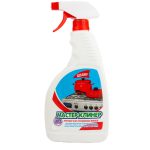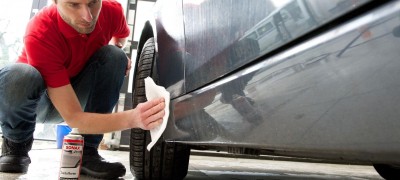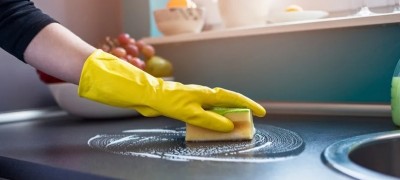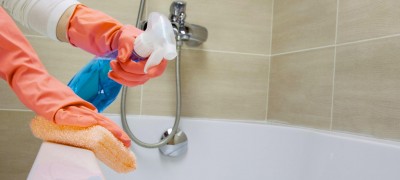Methods for cleaning stainless steel cookware
Stainless steel cookware is practical, durable and not cheap. Such products serve for decades, but they are not insured against the formation of carbon deposits on the surface. This phenomenon is especially true with frequent use.

How to clean a stainless steel, the types of tools for this and much more, we will consider in order further in the article.
- Basic rules for cleaning stainless steel dishes
- What not to do
- How to clean the inside of a stainless steel pot from carbon deposits
- Cleaning the outer surface from burning
- Cleaning features depending on the type of burnt food
- The best chemicals
- Cleaning methods using folk methods
- What household chemicals can I use
- Video: how to clean a stainless steel pan from carbon deposits
Basic rules for cleaning stainless steel dishes
There are certain rules. Knowing them, there will be no questions in the spirit of how to clean the dishes. Let's consider the basic rules:
- regular cleaning of the dishes will help to maintain its original appearance;
- use modern detergents, remembering to rinse them off with running water;
- stainless steel should not be washed in the dishwasher, it is better to use the manual method, and the auxiliary means: a soft sponge and detergent;
- wipe the dishes with a dry cloth after washing, so you can avoid drips;
- wiping is carried out with point movements (soaking), but not circular;
- you can restore the previous shine by using potatoes cut in half.

Strongly not recommended: use abrasive products, scrapers and hard sponges.
What not to do
With the recommendations for the proper cleaning of dishes sorted out, it's time to move on to advice, which is not recommended. Please read the tips below carefully:
Scrapers
This is the main enemy for pots. When trying to get rid of carbon deposits, especially stubborn ones, the idea of using metal scrapers may seem like a good idea, but it's a misconception. Indeed, together with carbon deposits, you can literally scrape off a part of the surface that cannot be restored.

Powders and abrasives
Powder products, hard sponges, with a rough surface have a similar effect.

Aggressive alkaline or acidic formulations
Such means may not be harmful, but playing roulette is far from always correct.
Note! It is best to use soft sponges and gel detergents.

How to clean the inside of a stainless steel pot from carbon deposits
When cooking, carbon deposits can form not only outside, but also inside the pan. And if external pollution is mostly a matter of aesthetics, then internal pollution makes the pan practically unsuitable for further use.

Let's consider the most popular sources of problems with the inner surface of dishes and ways to eliminate them:
Burnt porridge that was forgotten
This happens quite often. The first step is to fill the pot almost completely with water and put it on low heat. As it boils, you need to carefully peel the porridge from the walls.

When no solid particles remain, drain the contents, and using folk remedies or household detergents, complete the cleaning.
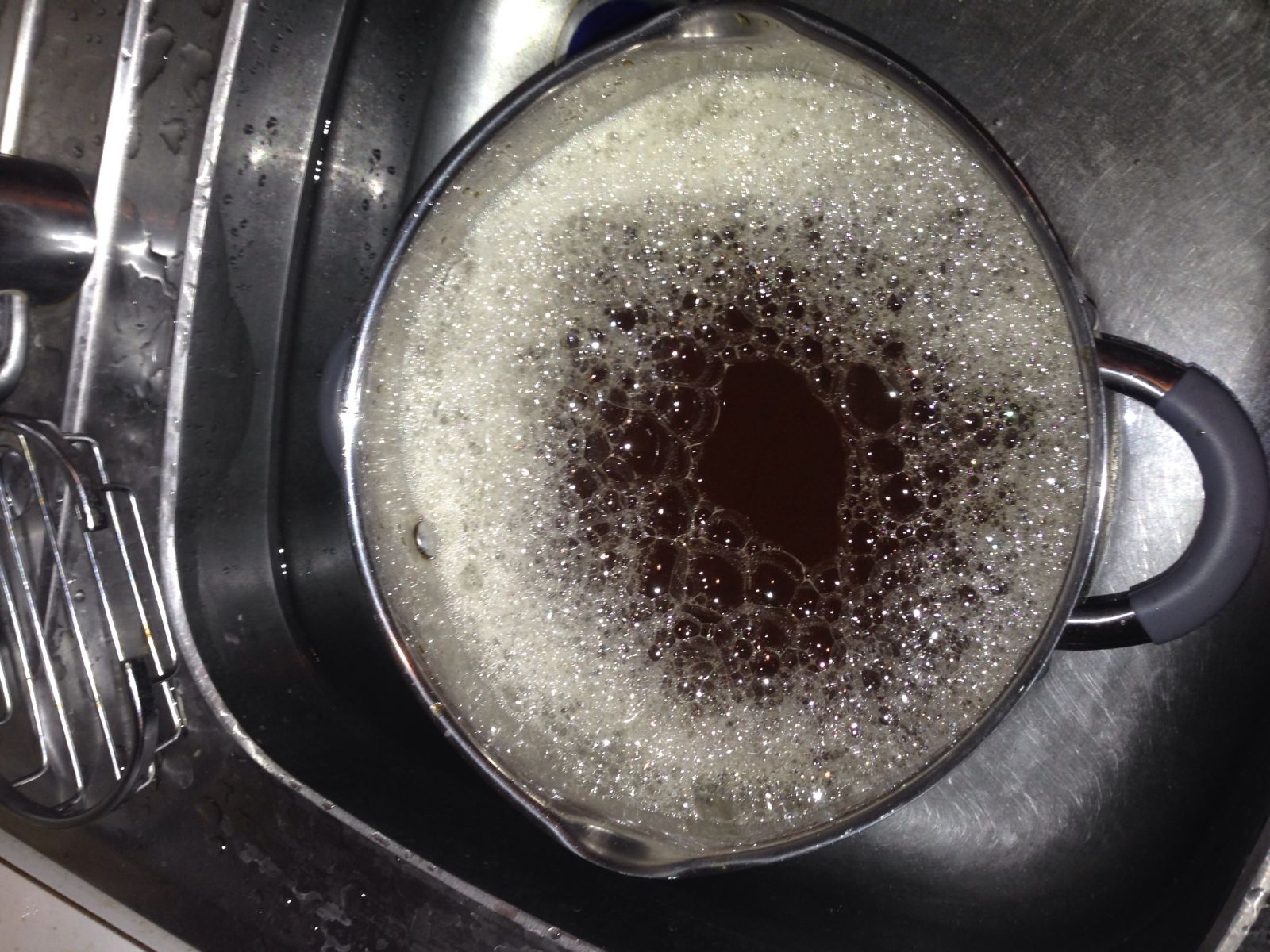
Burn from potatoes
They boiled potatoes, got distracted, and remembering saw an unpleasant picture - the inside of the stainless steel dishes became completely black. It will be more difficult to remove pollution here. But you need to act according to the same algorithm as in the previous paragraph.

Stainless steel frying pan burnt
Unlike pots, pans can have a non-stick coating. But this cannot provide 100% protection against sticking. If this happens, use the cleaning recommendations presented in the first step and don't forget about a detergent that will deal with the grease.
There can be many options for why stainless steel dishes burn. But the most important thing is not to overdo it in attempts to clean it and not to damage the surface. Especially when it comes to non-stick pans.

Cleaning the outer surface from burning
There are different ways to clean the outer surface of the pan from carbon deposits: folk methods, cleaning agents and detergents. There are a lot of options, but some of them are especially effective in the fight against specific types of pollution. For example, if we are talking about fatty foods, you will need to use specialized detergents.

It is no secret that boiling can greatly simplify the process. The remains are cleaned with soft sponges. But there are special types of pollution. For example, jam. We will consider how to deal with them further.
Cleaning features depending on the type of burnt food
Often it is not possible to keep track of porridge, soup, stew ... In all cases, the result will be approximately the same - drips are formed, which subsequently burn. But it is most likely that milk or jam will escape. If in the first case, there will be no problems with eliminating drips, then with jam everything is more complicated. The sugar in the composition and other substances will melt and eat into the surface.

How to get rid of burnt jam, several methods:
- Apple peel copes with this task quite effectively, because it contains acid. The cleanings need to be dipped in water, and the pan burnt from the outside should be placed in a larger container. Bring to a boil and turn off after 15-20 minutes. Then let the container cool down and rub it well with a wooden spatula. This will get rid of the main contamination.
- Serum has a similar effect. Buy a few liters of the substance and repeat the above procedure without diluting with water.

In addition to folk remedies, special detergents also show high efficiency. Some do better, others do less. It is best to objectively consider the most effective in order to choose for your situation.

The best chemicals
There is a conditional division of cleaning products into household and professional ones. The latter are used by cleaning companies and are effective but expensive. For home use, it is best to look at the options available to help deal with the dirt. Among them:
- "Amway" (positioned as a natural composition, absolutely safe for humans);
- "Myster Mycicle";
- Macter Klinep (similar in effect to the previous remedy);
- "Clean" and others.
Pay attention to the instructions left by the manufacturer on the packaging. Profiled (for cleaning stainless dishes) will show a more productive result.
Cleaning methods using folk methods
Many detergents on the market that can deal with problematic carbon deposits are available for purchase. But there is not always a desire or opportunity to go shopping. In this case, folk methods will come to the rescue - proven in practice by generations. Some of them are so powerful that they don't require "additional advertising". Let's consider the main methods.

Salt
This product is used not only in cooking for food preparation. With its help, you can get rid of carbon deposits. Considering the low cost of salt and its availability in almost every home, it is still worth trying to test the method in practice. We carry out the following algorithm of actions:
- fill the pan with water, leave it to sour for several hours;
- if the carbon is outside, then you will need a larger container in which you can place a contaminated stainless steel pan and fill it with water;
- drain the water, apply a layer of salt on the walls (in the area of carbon deposits), rubbing a little;
- after a few hours, wash off the salt and wipe off the carbon deposits with a soft sponge.

The proportion of the salt layer, if you decide to use a solution, is 1.5 kg per 5 liters of water. With the help of a solution, you can sometimes more effectively deal with dirt. But the method involves boiling.
Lemon acid
Everyone knows that kettle scale, rust and other types of dirt can be removed using citric acid. It can be called not only a food additive, but also a cleaning agent for all occasions, and soot is no exception. It is quite simple to use it:
- pour a sachet of citric acid into water, pouring it into a saucepan, stirring;
- put the dishes on gas, bring to a boil;
- remove from the stove 20 minutes after boiling;
- without pouring out the contents, let the solution cool;
- using a sponge and detergent, we remove carbon residues.

Lemon juice can be used as an alternative to powder. It can be applied to a burnt surface and let the acid work. Then we just wash it off as in the algorithm of actions described above.
Soda and silicate glue
The interaction of baking soda and silicate glue in the right proportions helps to eliminate even such difficult contaminants as carbon deposits. To prepare the composition you will need:
- 100 g of glue (PVA, stationery, silicate can be used);
- 5 liters of water (as the main solvent for the composition);
- half a packet of soda (regular, table).

The listed components are mixed, and the effect can be enhanced by adding detergent. Using a capacious container, immerse the pan or pan to be cleaned in it. and then fill it with a pre-prepared solution. Bring to a boil and do not remove from heat for 20 minutes. Let the liquid cool. Carbon deposits come off with little effort (we use an ordinary sponge).
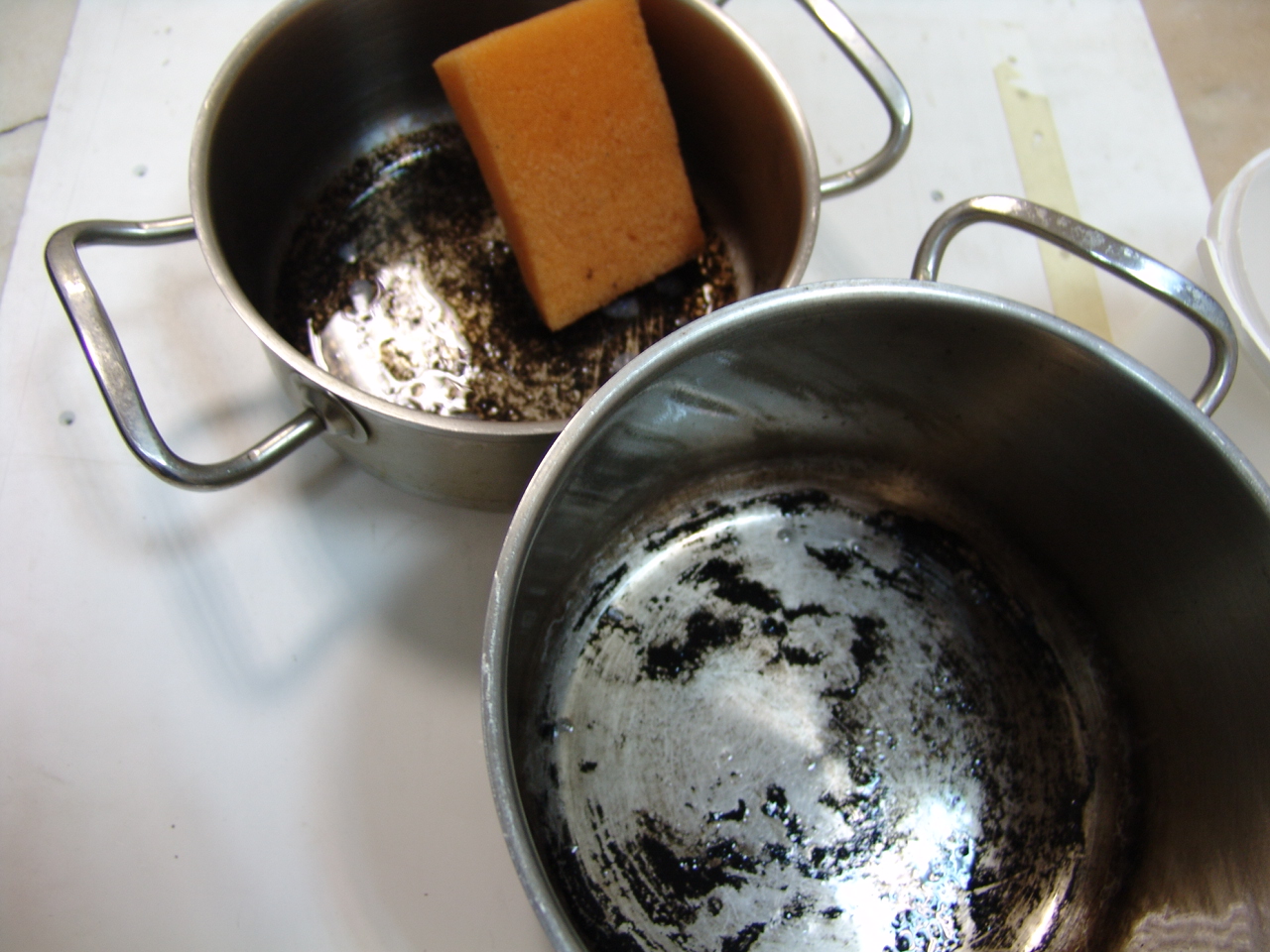
Boiling method with vinegar and laundry soap
A simple but effective method involves a boiling process. Laundry soap and vinegar act as an active active ingredient. It is quite simple to prepare the solution: rub the soap on a grater for faster dissolution in water. We fall asleep in a container with water and add vinegar (200-300 grams per 5 liters). Fill the dishes to be washed with the solution. We put on fire and boil for 20-25 minutes.
We drain the solution when the water cools down. Using a detergent, we get rid of carbon residues.
What household chemicals can I use
Do not use aggressive detergents and cleaners. It is best to turn to thinner compounds that will definitely not harm the dishes. We are talking about household detergents. For example, Whiteness (based on chlorine) is quite capable of simplifying the task of cleaning any contaminants.
The directions on the detergents' labels will serve as a guide when choosing household chemicals.
Video: how to clean a stainless steel pan from carbon deposits


